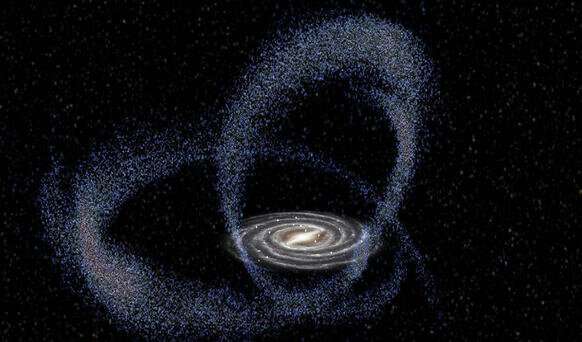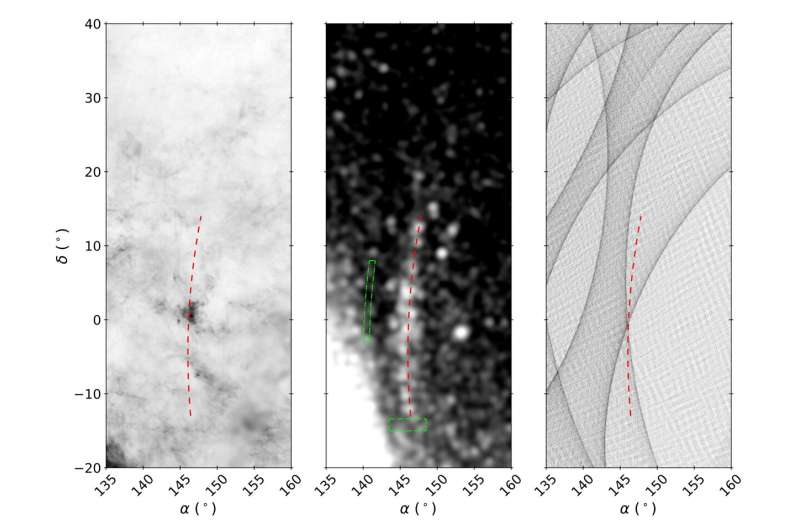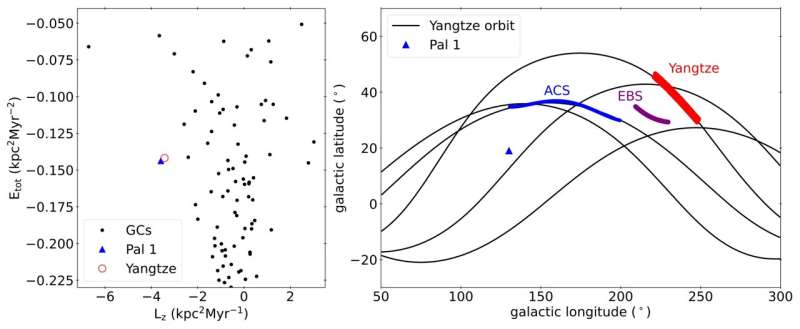This article has been reviewed according to Science X's editorial process and policies. Editors have highlighted the following attributes while ensuring the content's credibility:
fact-checked
peer-reviewed publication
trusted source
proofread
Researchers detect a new stellar stream from dwarf galaxy using Gaia DR3

The Milky Way increases its mass by merging with low-mass dwarf galaxies. Some of these dwarf galaxies will experience tidal forces during orbiting around the Milky Way, and their member stars will be lost.
As a result, there will be tidal tails on one or both sides of these dwarf galaxies, known as stellar streams. The Sagittarius stream is the most typical and direct evidence of this. However, there are far more streams generated by globular clusters than those generated by dwarf galaxies in the Milky Way so far.
Recently, by mining Gaia data release 3 (DR3), researchers led by Dr. Yang Yong and Dr. Zhao Jingkun from the National Astronomical Observatories of the Chinese Academy of Sciences (NAOC) have discovered a new stellar stream from a dwarf galaxy in the Milky Way. This finding will enlarge the stream number originating from dwarf galaxies.

The results were published in The Astrophysical Journal Letters on March 1.
The researchers developed an algorithm called Stream Scanner based on a matched filter method. "This algorithm is designed for detecting streams by combining proper motions and photometry from Gaia. A new stream was exposed and was dubbed as Yangtze," said Dr. Yang.
Yangtze was proved not to be an artificial signal based on interstellar extinction and Gaia DR3 scanning pattern. It was measured to have a width of 1.9 degrees and a length of 27 degrees on the sky, with a distance of 9.12 kpc from the sun, and its metallicity [Fe/H] was estimated to be -0.7 dex.

The researchers also tried to understand whether Yangtze was associated with other known streams and globular clusters in the Milky Way. They found that the globular cluster Pal 1 was rather near to Yangtze in angular momentum and energy space, and the Anticenter Stream (ACS, a known stream) was almost on the orbit of Yangtze. These results suggest Yangtze may have a close connection with Pal 1 as well as ACS.
"Dwarf galaxy debris streams are key materials to reveal the Galactic structure and evolution. Yangtze should be helpful in studying the merger history of the Milky Way," said Dr. Zhao.
More information: Yong Yang et al, A Dwarf Galaxy Debris Stream Associated with Palomar 1 and the Anticenter Stream, The Astrophysical Journal Letters (2023). DOI: 10.3847/2041-8213/acbb5c
Journal information: Astrophysical Journal Letters
Provided by Chinese Academy of Sciences




















